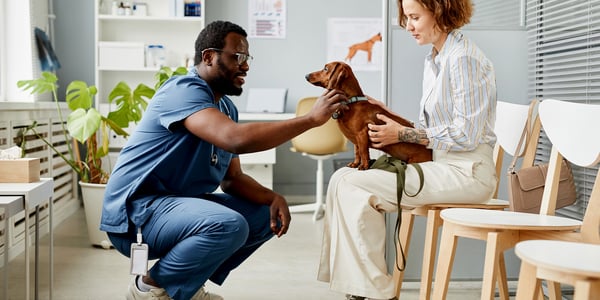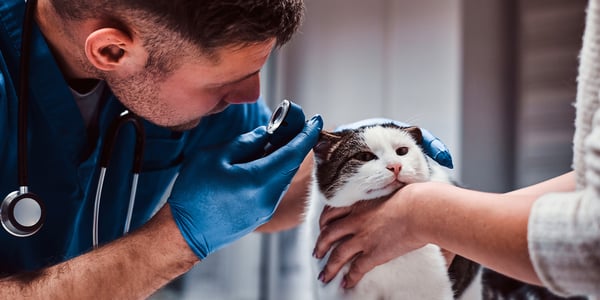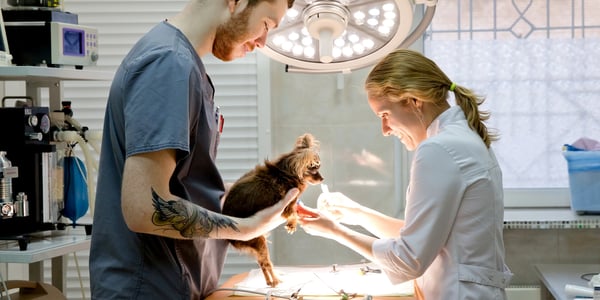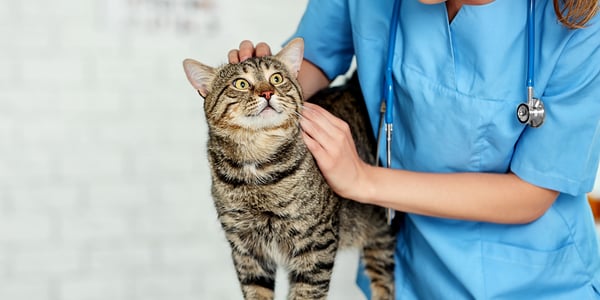Behind the Scenes at the Vets: Inside Scoop & 10 Interesting Facts You May Not Know
Index:



Introduction
When you take your pet to the vets, you're usually greeted by a friendly receptionist, maybe a wagging tail in the waiting room, and a short visit with the veterinarian. But what you don’t see is the huge team effort that goes into keeping the practice running and keeping your pet healthy and safe.
In this article, we’re going to explore the inside world of veterinary care - from a typical day at a 24-hour hospital to the steps towards becoming a veterinary nurse. Whether you're simply curious about the day-to-day work that takes place or you’re considering a career in animal care yourself, here’s your behind-the-scenes look at life inside a veterinary hospital.



What a typical day in a veterinary hospital looks like
Until you’ve actually worked in one yourself, you’ll realise that a veterinary hospital is a very fast-paced and intricate ecosystem - and it can be hectic. From my own experience working in a 24-hour veterinary hospital, no two days are ever the same.
The benefit of having multiple vets meant that the day would usually start with one or two vets handling consults, one in surgery, and another managing patients in the wards.
At a 24-hour veterinary hospital, both vets and nurses are on-site around the clock, so there’s always someone to care for in-patients if they need help, no matter the day or time. This means that, unlike typical practices that close in the evening, 24-hour veterinary hospitals really are there for you 24/7, 365 days a year - yes, even on Christmas Day!
A typical day working as a veterinary nurse or veterinary care assistant is anything but boring. Throughout the day, you'll find yourself switching between hands-on animal care and admin tasks. Duties you’d perform daily include restraining pets for clinical exams, cleaning kennels, assisting with surgeries and monitoring anaesthetics, health checks on animals in the ward (such as temperature checks and heart rate checks, etc), speaking with clients, as well as helping with reception duties.
One minute you're restocking medications in the pharmacy, and the next you're clipping claws or setting up for X-rays; it’s certainly not the job for those who like to take things slow!
What’s so great about this, though, is that you get the best of both worlds - it’s a role that keeps you busy and involved in all parts of the clinic. No matter what’s going on behind the scenes, every client and pet is met with compassion, patience and understanding.



The inside scoop on training to be a vet nurse
There are two main ways you can become a veterinary nurse: either via vocational training through working in practice, or via higher education through a university or college course. Veterinary nurses and veterinary care assistants are sometimes referred to as the “hands” of the vets. Their workload often seems endless, as they assist with every aspect of animal care.
As we’ve discussed above, VCAs (veterinary care assistants, also referred to as patient care assistants) do a bit of everything - helping to keep the clinic running smoothly by supporting the vets, the nurses and the rest of the team with everyday tasks. They’re a big part of making sure things go smoothly behind the scenes, and making sure that your furry friends get the care and attention they need when they’re feeling poorly.
Working as a veterinary care assistant opens the pathway to becoming a veterinary nurse. All veterinary nurse courses must be accredited by the Royal College of Veterinary Surgeons (RCVS) and include practical training in an approved practice. Excellent communication skills are essential, not just with colleagues, but with pet owners too.
After all, animals can’t talk, so it’s up to us to act as their voice, interpret how they’re feeling and explain treatment plans clearly. While the job can be both physically demanding and emotionally draining - dealing with pain, loss, and stress - knowing you can help and even save lives makes it truly rewarding and highly fulfilling.



10 facts about working in a vet hospital
1. Vet nurses can perform dental work - like scale and polishes -yes, really!
2. There’s a lot of cleaning - think poo, pee, vomit... luckily we have lots of gloves!
3. Some dog kennels are human-sized - just be careful not to get locked in (yes, this has happened...)
4. We use our own lingo - "tx" = treatment, "px" = prescription, “wnl” = within normal limits, "nad" = nothing abnormal detected.
5. Bringing your dog in to induce vomiting? Someone’s running around with a plastic-covered tray, trying to catch and inspect it.
6. We treat the patients like our own - on nights rocking them to sleep, singing to them and reading them made-up bedtime stories.
7. A lit candle - when a pet is being put to sleep, a candle is sometimes lit in the reception area so people know someone is saying goodbye to their pet, and they can be respectful and quiet.
8. Veterinary hospitals are not too dissimilar to human hospitals - some have MRI, CT and X-ray suites, intensive care units and separate dog, cat, exotic and isolation
wards!
9. Cuddle clinics exist! They help reduce anxiety in nervous pets who hate vet visits.
10. Treats galore - the amount of treats clinics go through may surprise you; some can go through around three bags a day.
Conclusion
So now you know - behind every great veterinary practice is a team of hardworking and compassionate vets, nurses, care assistants and receptionists. Driven by the love for animals, the dedication is everlasting, even when some days feel like it's the end of the world. So next time you’re taking your furbaby to the vet, spare a thought (and maybe a kind word) for the entire team working tirelessly behind the scenes to make it all possible.
Waggel Pet Insurance
Need more help? You're in luck if you're a Waggel Pet Insurance member. Along with our excellent coverage, we offer access to a 24/7 online vet to answer all your sticky questions, especially if you need grooming assistance.
Not a member? Why not get a quote now and cover your furry friend for a range of illnesses, all while enjoying our amazing perks and rewards.
Want more like this?
Get updates from us with helpful info, advice, answers to frequently asked questions and much more.
Index:
Related posts:
Get your quote
Along with our excellent coverage, we offer access to a 24/7 online vet to answer all your sticky questions.





